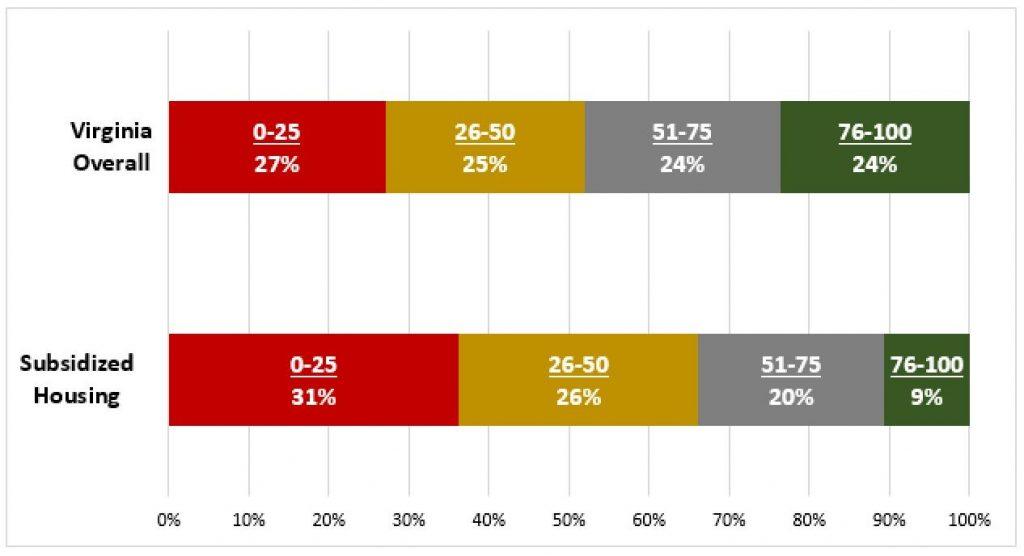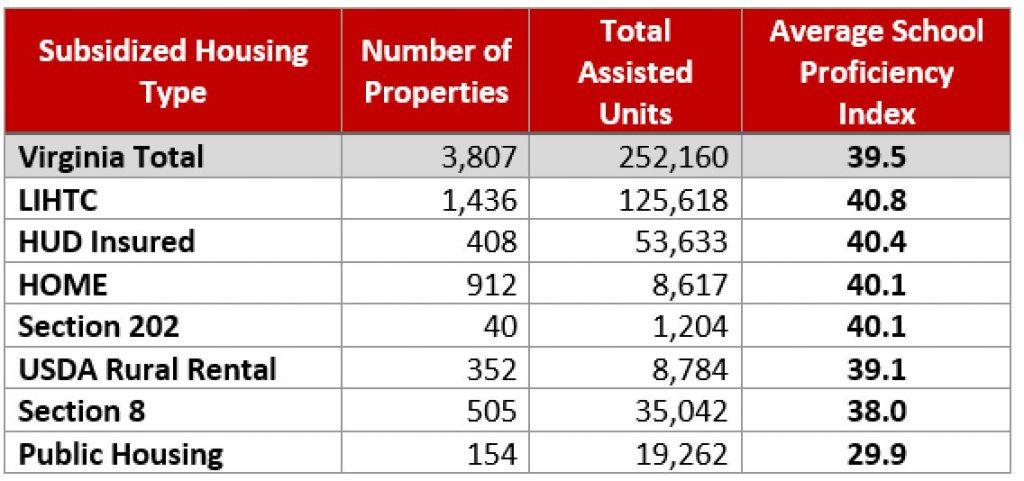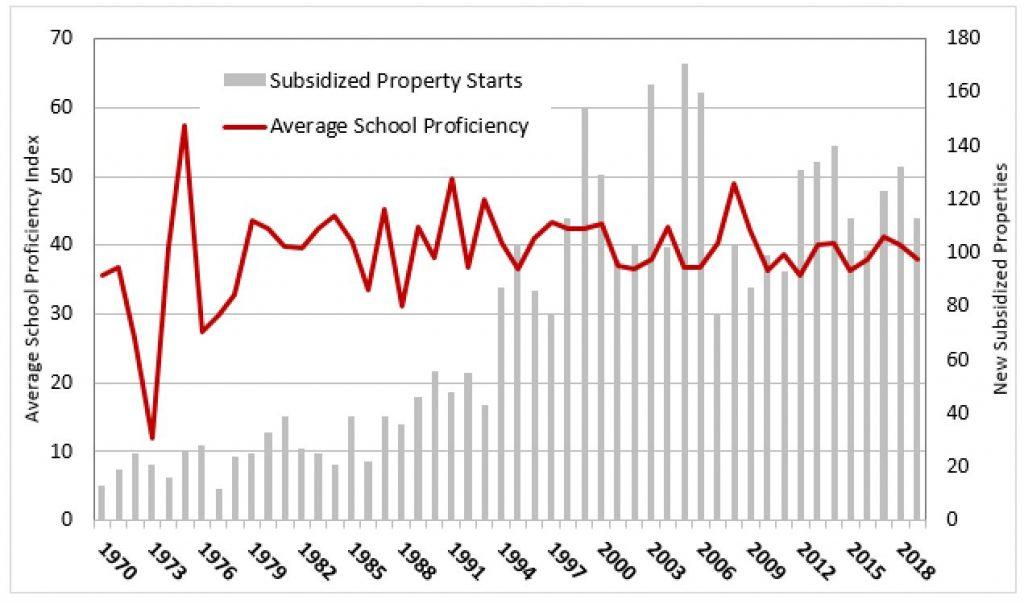Where do children in affordable housing go to school? (Part 2)
It is important that kids from economically-disadvantaged families have access to good schools so that they will have a better outlook for employment, income, and overall wellbeing than their parents’ generation. My first post on this topic provided an introduction to the interrelation between an area’s school proficiency and its cost of housing. By giving an overview of both school quality and housing cost across Virginia, the post provided context in relation to the quality of schools children in lower-income housing are attending. One way that governments provide opportunity for low-income households is by offering them rental subsidies to live in areas where job centers, amenities, and higher-quality schools are located. This second post will focus on (1) where subsidized housing is located in Virginia and (2) how this relates to school quality.
Affordable housing is an ambiguous term that means different things to different people. In this study, it focuses on federally subsidized or assisted rental housing that provides lower-income households the financial ability to have affordable homes. Federally subsidized or assisted housing comprises the majority of subsidized units in service today, including those under the Low-Income Housing Tax Credit (LIHTC), Section 8, Public Housing, HOME, HUD Insured, USDA Rural Rental Housing, and Section 202 programs. Data for this analysis are drawn from the National Housing Preservation Database (NHPD).

In Figure 1 above we see that, overall, subsidized properties tend to be clustered in urban areas near job and population centers. We also see a scattering of locations in rural areas, which are primarily served by USDA rural rental housing loans. Figure 2 below zooms in on the Hampton Roads region. From this view, it is evident that the majority of the subsidized housing locations are outside of the high-performing school districts.

The School Proficiency Index is distributed relatively evenly across all areas of the state, as seen in the top bar of Figure 3. The distribution among block groups where subsidized housing is located, however, is skewed toward the lower end of school proficiency – 31 percent of neighborhoods with subsidized housing have school proficiency levels of 25 or less compared to 27 percent of all neighborhoods in Virginia. Only 9 percent of neighborhoods with subsidized housing have access to the top one-fourth of school proficiency.

Looking closer at the data in Figure 4 below, we see that the average school proficiency level available to those living in subsidized properties in Virginia is 39.5 – 10 points lower than the statewide average of 49 available to all housing units. The average school proficiency index remains around 40 for the different types of subsidized housing, with public housing as an outlier at 29.9. This makes sense, as federal public housing was initially built in areas with concentrated poverty and little access to opportunity. The average school proficiency is highest among neighborhoods with LIHTC housing. LIHTC housing is often not fully low-income, has some market-rate units, and its low-income requirement expires after 15 years. These factors may influence developers to build their units in better school districts where they can be competitive and attractive on the market.

Most kids who grow up in subsidized housing do not have access to high-quality schools. This issue has been persistent and unchanging over the past 50 years. As the number of new subsidized housing units put into service has increased dramatically, the average school proficiency of the neighborhoods within which these starts have been placed has remained relatively constant over time. (Figure 5). This means that the subsidized housing units are being placed in neighborhoods with the same school proficiency as they have in the past rather than being placed in areas with higher school proficiency.

Decreasing the mismatch between high-performing schools and students from low-income households depends on either (1) decreasing the disparities in public education quality or (2) using housing policy to promote the co-location of low-income households with high-quality schools. While subsidized housing is frequently placed in less desirable areas that tend to have low school proficiency, shifting state and local housing policy may help to improve the situation. Improved residential choice among lower-income households can help the kids access quality schools that students in middle- and upper-income households enjoy. Incentivizing and supporting the development of affordable housing near quality schools is worth policy consideration. It is critical that children in low-income families have access to good schools, improving their prospects for the future and breaking the chain of poverty.


